Deadlock Valve Competitive Future: Trends, Features, and Esports
Updated On: November 29, 2025 by Aaron Connolly
Understanding the Competitive Landscape of Deadlock
Valve has set up Deadlock as a hybrid, mixing classic MOBA elements with hero shooter mechanics. It really carves out its own competitive space. The game sits right at the intersection of genres, pulling from Valve’s experience with Dota 2 and going head-to-head with games like Overwatch.
Valve’s Vision for Deadlock
Valve hasn’t dropped an official roadmap yet, but their moves speak for themselves. They clearly treat Deadlock as the next big thing in their competitive lineup.
They’ve rolled out updates that show real commitment to keeping the game viable long-term. In January 2025, they dropped four new heroes—Calico, Holliday, Sinclair, and Vyper. Then in February, they shook things up with a big map redesign, cutting lanes from four to three.
These aren’t just minor adjustments. Valve is willing to overhaul core systems to keep things balanced for competition.
Their history with Dota 2 and Counter-Strike 2 really shows they get what helps games stick around. Both titles are still esports giants after all these years.
Usually, Valve supports their competitive games for decades. That kind of dedication gives Deadlock a solid base for esports growth.
Just a heads up: Valve almost never shares timelines, so it’s tough to guess when big competitive milestones will land.
Defining Deadlock’s Competitive Genre
Deadlock doesn’t fit neatly into any one box. It’s part MOBA, part hero shooter, and honestly, it feels like something new in the competitive scene.
You get six-versus-six matches, now with three lanes after the recent change. Players pick heroes with their own unique abilities, kind of like in Dota 2 or League of Legends.
But then you add shooting mechanics that remind you more of Overwatch. Players actually have to aim, not just click targets.
Key competitive elements:
- Laning phase and creep farming
- Item builds that change with each match
- Team fights over objectives
- Comeback mechanics that keep games tense
The hybrid setup opens up fresh strategic possibilities. Teams have to juggle classic MOBA farming with shooter-style aggression.
This mashup pulls in fans from both MOBA and FPS backgrounds. Some ex-Overwatch pros are already showing up in Deadlock tournaments.
Quick tip: Check out community tournaments like Deadlock Fight Night to see how the meta is shifting.
Comparison with Other MOBAs and Hero Shooters
Deadlock faces tough competition from the big names in both genres.
Against Dota 2:
- Deadlock feels more approachable
- Matches move faster and have more action
- New players don’t hit as steep a learning curve
Against Overwatch:
- Deadlock brings deeper strategy to the table
- You can customize with item builds, which Overwatch doesn’t really have
- Maps offer multiple objectives, not just one point
Versus League of Legends:
- Deadlock makes you rely on shooting skills
- Team comps stay flexible, not locked in
- The pace stays high from start to finish
Player numbers paint a pretty clear picture. Deadlock hit over 170,000 concurrent players in September 2024. By 2025, it’s dropped to about 10,000 on Steam.
Overwatch still sees around 35 million monthly players. Dota 2 averages over 400,000 concurrent players daily.
So, Deadlock needs to prove it’s got real staying power. The hype cooled off, but the competitive scene could revive it.
Community tournaments keep popping up despite lower player counts. That kind of grassroots energy hints there’s still plenty of competitive potential among the diehards.
Game Development and Early Progress
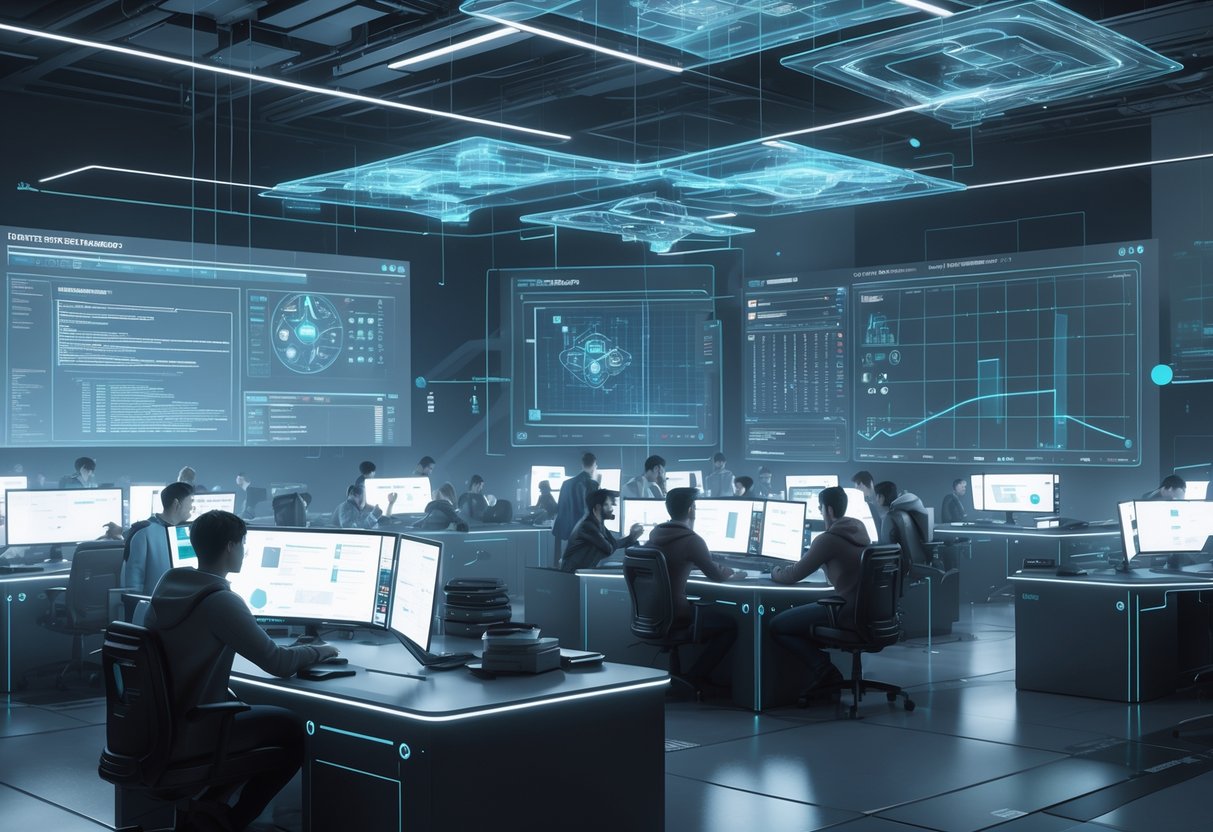
Deadlock has picked up serious momentum since early development began. Valve’s approach to testing and community input feels a bit different from the norm.
The way the game moved from alpha to planned open beta really shows how community feedback keeps shaping development.
Alpha and Closed Beta Insights
Deadlock’s closed beta phase surprised a lot of folks. The game shot up to over 170,000 concurrent players in September 2024, which is wild for a beta.
But numbers dropped down to about 10,000 concurrent users after that. Honestly, that’s pretty normal for early development titles.
Key beta highlights:
- Added Calico, Holliday, Sinclair, and Vyper in January 2025
- Complete map overhaul—cutting down from four lanes to three
- Big balance changes that shook up jungle vs. lane play
The closed beta really showed off Deadlock’s core strengths. Players coming from Overwatch 2 seemed to love the extra strategy. Community tournaments like Deadlock Fight Night just popped up on their own.
Valve has dropped patches pretty regularly during closed beta. These updates prove they’re still deep in development mode.
Open Beta Expectations
Valve hasn’t given a date for open beta yet. If you look at their development style, it seems like open beta is still a ways off.
They’re busy reworking hero balance, polishing observer tools, and making sure the three-lane map feels right. Cross-platform testing is on their radar too.
When open beta does hit, expect a bigger marketing push. Valve usually waits until things feel stable before letting more people in.
Full release? Probably not before late 2025, if we’re being realistic.
Role of Community Feedback
Players have really shaped Deadlock’s direction. Valve’s devs keep an eye on discussions and tournament results.
That move from four to three lanes? Community feedback played a big part. Players said four lanes made teamwork too tough.
Community contributions:
- Balance feedback led to hero tweaks
- Map design ideas made it into updates
- Tournament formats helped test if the game works competitively
- Quality of life improvements for spectators
Valve dev “Yoshi” actually posts updates and responds to concerns, which you don’t see from every company.
Grassroots tournaments keep giving Valve data on high-level play. This helps them spot balance problems before the next big update.
The back-and-forth between players and developers looks crucial for Deadlock’s future. Even with lower player counts, the active community gives the game a shot at long-term success.
Key Features Defining Competitiveness

Deadlock’s competitive scene really leans on two things: how Valve handles new heroes and their creative training environments. These choices add depth but still keep competitive integrity front and center.
Staggered Hero Release Approach
Valve is pretty careful about how they drop new heroes into Deadlock. Instead of dumping a bunch at once, they roll out heroes in waves.
In January 2025, they added Calico, Holliday, Sinclair, and Vyper. This slow rollout gives the competitive scene time to adjust.
Each hero gets a solid testing period. Pros get early access and can give feedback before the rest of us see the new character.
This method prevents the chaos that can wreck competitive balance in other games. Teams have space to learn matchups and build new strats.
Want to try new heroes early? Watch the public test servers—Valve often lets players experiment before ranked play changes.
This staggered release keeps viewers interested too. New hero debuts at tournaments are always a big deal, but you don’t have to relearn the whole game every time.
The Hideout and Lobby Innovations
Deadlock’s training system revolves around The Hideout. It’s a practice space that goes way beyond old-school shooting ranges.
Players can try out weapon builds, work on movement, and mess with item buys. You can save custom loadouts for quick swaps.
Steam integration lets you share practice setups with teammates. Teams can train together using the same drills.
The dashboard spits out detailed performance metrics during practice. Teams can look at reload times, damage, and movement stats.
| Feature | Competitive Benefit |
|---|---|
| Custom Scenarios | Team-specific practice |
| Performance Tracking | Data-driven improvement |
| Shared Loadouts | Consistent team strategies |
Mina, the AI training partner, adapts to your skill. She acts like a real opponent, so you don’t need a full squad to practice.
The lobby fits up to 12 players for scrims. Teams can run full 6v6 matches with custom rules.
Heroes and Game Balance
Valve is bringing six new heroes to Deadlock, starting August 18, 2025, with a staggered schedule. They plan to roll out balance updates after each hero launch to keep the competitive scene healthy.
Introducing Six New Heroes
Valve announced six new heroes for Deadlock, but they’re not dropping them all at once. Mina the vampire launched first on Monday, August 18th. The other five will come out every Monday, Wednesday, and Friday for a few weeks.
Players actually get to vote on which hero comes next. After any match, you earn a vote to cast at the Hideout’s voting booth. It’s a cool way to let the community set the order.
With this rollout, players have time to really learn each new hero. Valve can also watch how each one affects balance before adding the next.
This setup makes sense for competitive play. Teams won’t get overwhelmed trying to figure out six new heroes at once. They can focus on one, then move to the next.
Hero Balance and Updates
Valve says they’ll adjust balance after each hero release. The devs are watching matches closely and will tweak things fast if a hero feels broken or too weak.
They’ve already got future balance patches lined up. That shows they’re serious about keeping every hero viable and the game fair.
The focus is on making sure no hero dominates or gets left behind. This balance-first approach is key for Deadlock’s competitive future.
With regular balance updates, teams have to stay flexible. What works now might not work after the next patch, which keeps things fresh.
Mechanics That Impact Competitive Play
Deadlock’s competitive backbone comes from its teamwork systems and new matchmaking ideas. These mechanics really push players to coordinate and prove their skills if they want to compete seriously.
Teamwork and Communication Systems
Deadlock’s 6v6 setup throws some wild coordination challenges at you, so teamwork really matters. The game mashes up MOBA strategy with hero shooter mechanics, so teams juggle lane control, time objectives, and clash in team fights all at once.
Honestly, the in-game communication tools just aren’t good enough for serious competition yet. Tournament broadcasts also struggle because the observer tools don’t show enough detail, which leaves new viewers kinda lost during complicated plays.
Key teamwork elements include:
-
Lane coordination between six players
-
Objective timing across multiple map areas
-
Resource sharing and economy management
-
Hero ability combinations during team fights
Movement mechanics create the largest skill gap between casual and competitive players. Teams have to practice movement and coordinate tightly to pull off advanced maneuvers in matches.
Valve rolled out an “extra competitive option” that demands higher coordination and communication. This mode appeals to players craving structured, tournament-style play instead of casual matchmaking.
Matchmaking and Ranking Innovations
Deadlock’s matchmaking system tries to balance a hybrid game across all skill levels, but it’s a tough job. It has to weigh both individual mechanical skill and team-based strategy.
The ranking system needs to judge players in different areas. MOBA knowledge, shooter aim, and movement all matter, so a simple ranking just doesn’t cut it.
Right now, matchmaking struggles because only about 10,000 players are online at once. With fewer players, it’s tough to build balanced matches—especially for the top skill brackets.
Matchmaking improvements needed:
-
Role-based queuing for different positions
-
Separate rankings for individual and team skills
-
Better new player onboarding systems
-
Regional server optimisation
Frequent balance updates add more matchmaking headaches. Whenever Valve makes big hero changes, player ranks can get out of sync with actual skill.
Dashboard systems also need work to give players clear, useful progress feedback. Everyone wants to see how they’re improving across all the game’s skill areas.
Esports Aspirations and Potential
Deadlock takes advantage of Valve’s esports experience, and you can already see grassroots tournaments popping up. The game’s strategic depth and fun mechanics make it a natural fit for pro play.
Valve’s Esports Legacy
Valve basically shaped modern esports with Dota 2 and Counter-Strike. Both games built massive prize pools and global audiences that changed competitive gaming forever.
Dota 2’s The International keeps smashing prize pool records—over $40 million in 2021! That’s proof Valve knows what makes esports tick.
Counter-Strike keeps a steady audience year after year, and its staying power shows Valve understands how to support long-term competitive scenes.
Key advantages Valve brings:
-
Established tournament infrastructure
-
Experience with professional player support
-
Strong relationships with broadcast partners
-
Proven anti-cheat systems
Gaming expert James Connolly points out that Valve’s style is different from other developers. They let the community drive growth instead of forcing esports initiatives.
Deadlock rides on this proven system. Valve already has prize distribution and tournament organisation sorted out.
Emerging Competitive Scene
Community tournaments like Deadlock Fight Night and university competitions keep the competitive scene alive, even though the player count has dropped to about 10,000. Top players from Overwatch 2 have already joined Deadlock’s grassroots events.
The 6v6 format creates real team dynamics. Strategic depth comes from mixing MOBA and hero shooter elements.
Current competitive activity includes:
-
Weekly community tournaments
-
University-level competitions
-
Semi-professional team formation
-
Content creator involvement
Observer tools still need work to make broadcasts better. The game needs more robust spectator features for bigger tournaments.
Teams are already prepping for structured leagues. Pro organisations are watching Deadlock’s progress closely.
Warning: The drop from 170,000 to 10,000 concurrent players makes you wonder if competitive interest can last.
The movement system widens the skill gap between new and veteran players. That depth is great for competition but could scare off casuals.
Quick tip: Check out current Deadlock tournaments on streaming platforms to get a feel for the competitive scene.
Player Base and Community Engagement
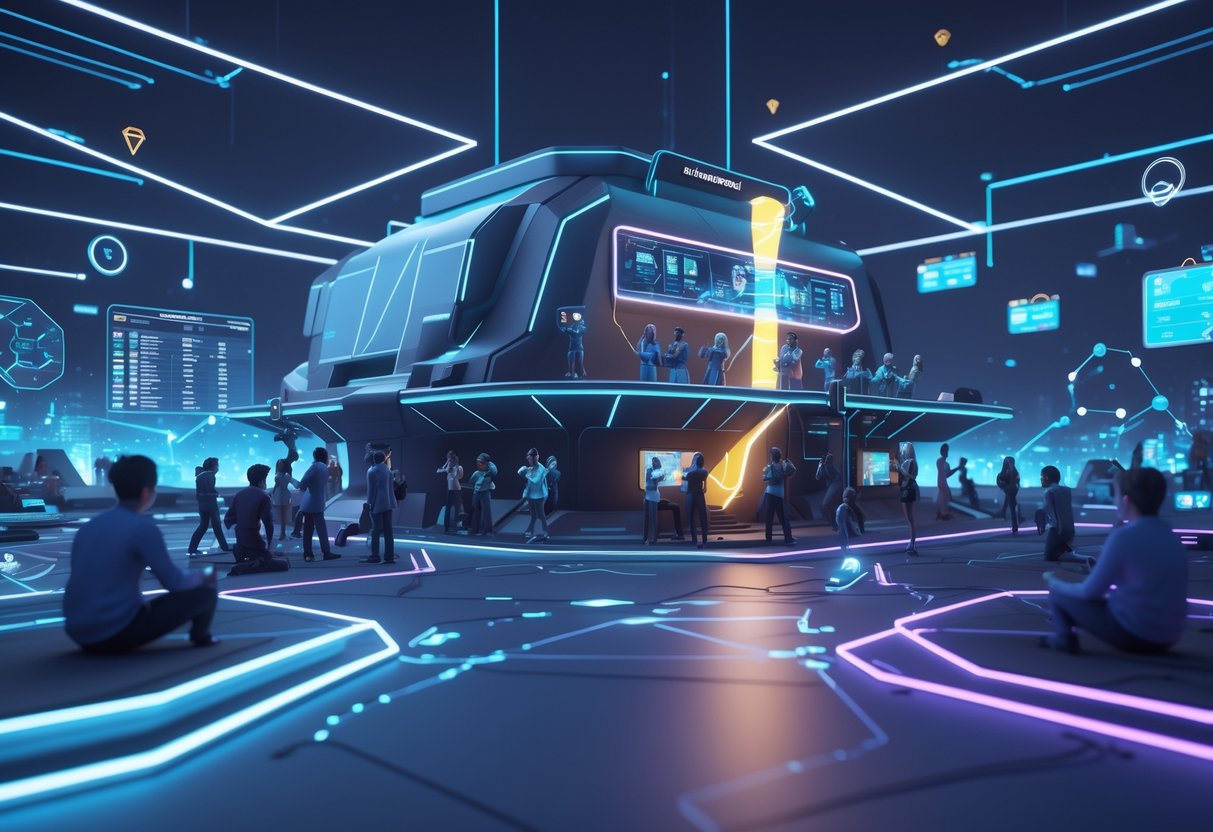
Deadlock’s player base has dropped off since its October 2024 peak, but grassroots community efforts and Valve’s feedback-driven updates keep some momentum going. The closed alpha keeps growth slow, but dedicated tournaments and college competitions still fuel the competitive side.
Current Player Activity
Deadlock’s player retention is a real problem. After October 2024, numbers tanked, and matchmaking became a headache with so few players.
During major updates, the game hit over 120,000 peak concurrent users. But those spikes didn’t stick. Steam forums are full of complaints about long queues and lopsided matches.
Key Player Metrics:
-
Peak players topped 120,000 during the wall-jumping update
-
Big decline since October 2024
-
Matchmaking struggles with low player pools
-
Closed alpha blocks new player growth
The closed alpha makes it tough for the game to grow naturally. Open betas usually go viral, but Deadlock’s invite-only approach keeps the community small.
Community Involvement Strategies
Valve really listens to the community and pushes updates based on feedback. They’ve made big changes—like wall-jumping and more than 100 balance tweaks—because players asked for them.
Active Community Initiatives:
-
Deadlock Fight Night tournaments keep the competitive scene alive
-
Collegiate competitions bring in student players
-
Hero voting system lets players decide release order
-
Community feedback integration shapes development
Pro players from Overwatch 2 and other games are moving into Deadlock’s scene. They bring leadership and experience, which helps the community stay active even as numbers shrink.
Valve’s history of supporting games for years encourages people to stick around. Their ongoing refinements based on player input keep folks engaged, even during rough patches.
Adding six new heroes—chosen by the community—shows Valve wants players to have a say in content.
Design Influences and Inspirations
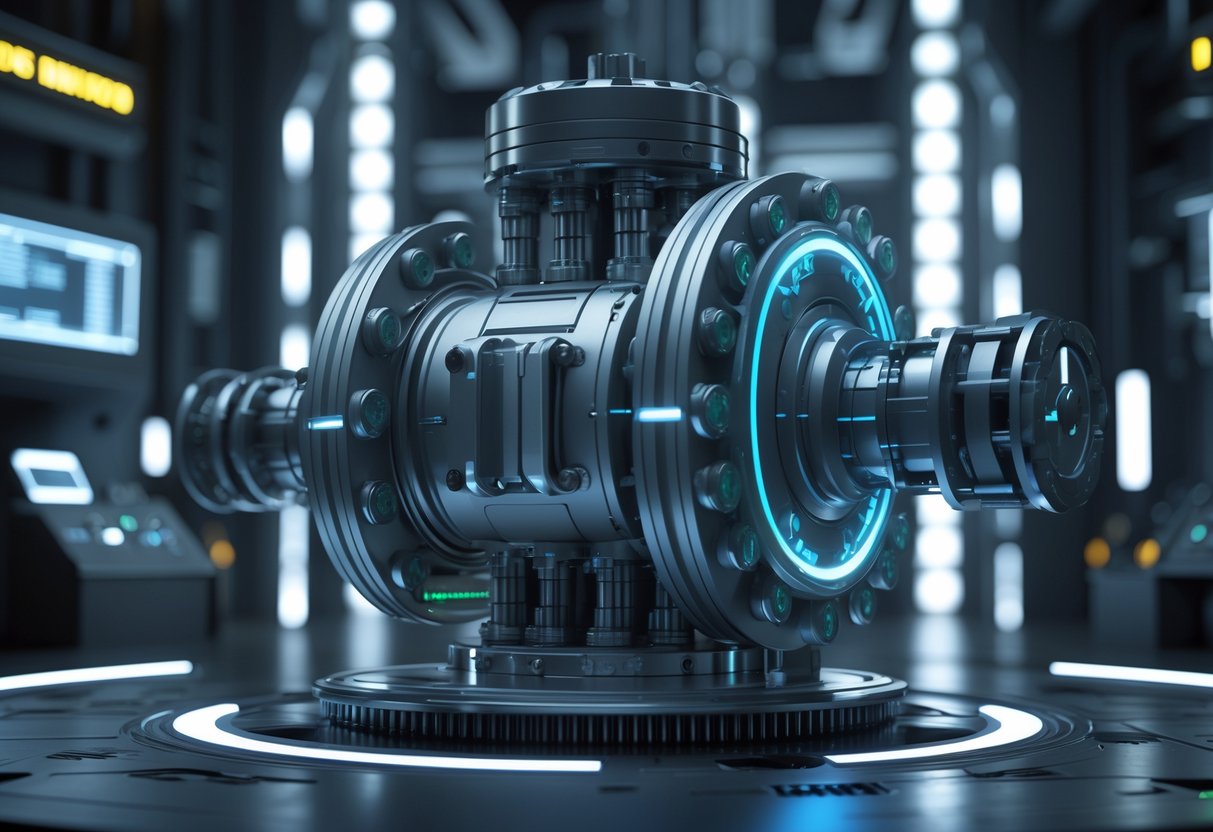
Deadlock borrows heavily from Valve’s experience with Dota 2 and mixes in the fast-paced team fighting that made Overwatch a hit. With 20 years in competitive gaming, Valve knows what makes an esport last.
Learning from Dota 2 and Overwatch
Deadlock’s 6v6 format pulls the best from both worlds. From Dota 2, you get complex items, lane objectives, and deep strategy that keeps matches interesting for ages.
Hero abilities and team fights clearly take cues from Overwatch’s easy-to-grasp action. Quick respawns and constant combat make Deadlock more approachable than most MOBAs.
Warning: Deadlock keeps MOBA complexity, so there’s a real learning curve—don’t expect Overwatch-level simplicity.
The movement system creates skill gaps just like in Dota and Overwatch. Veterans use tricks that stump new players for a while.
Valve’s History with Competitive Games
Valve has supported competitive scenes for over two decades. Counter-Strike and Dota 2 tournaments regularly feature million-pound prize pools and global viewership.
Their approach focuses on long-term stability rather than quick launches. Dota 2 spent years in development before becoming a premier esports title.
The studio’s Steam platform gives Deadlock some built-in perks:
-
Direct player feedback through integrated systems
-
Workshop support for community content
-
Established tournament infrastructure
Valve tends to support games for decades. That kind of commitment attracts pro players and organisations who want stability.
Their balancing philosophy aims for all heroes to stay viable, instead of constant meta shake-ups. That’s helped Dota 2 stay competitive for over 13 years.
Challenges and Opportunities in Competitive Gaming
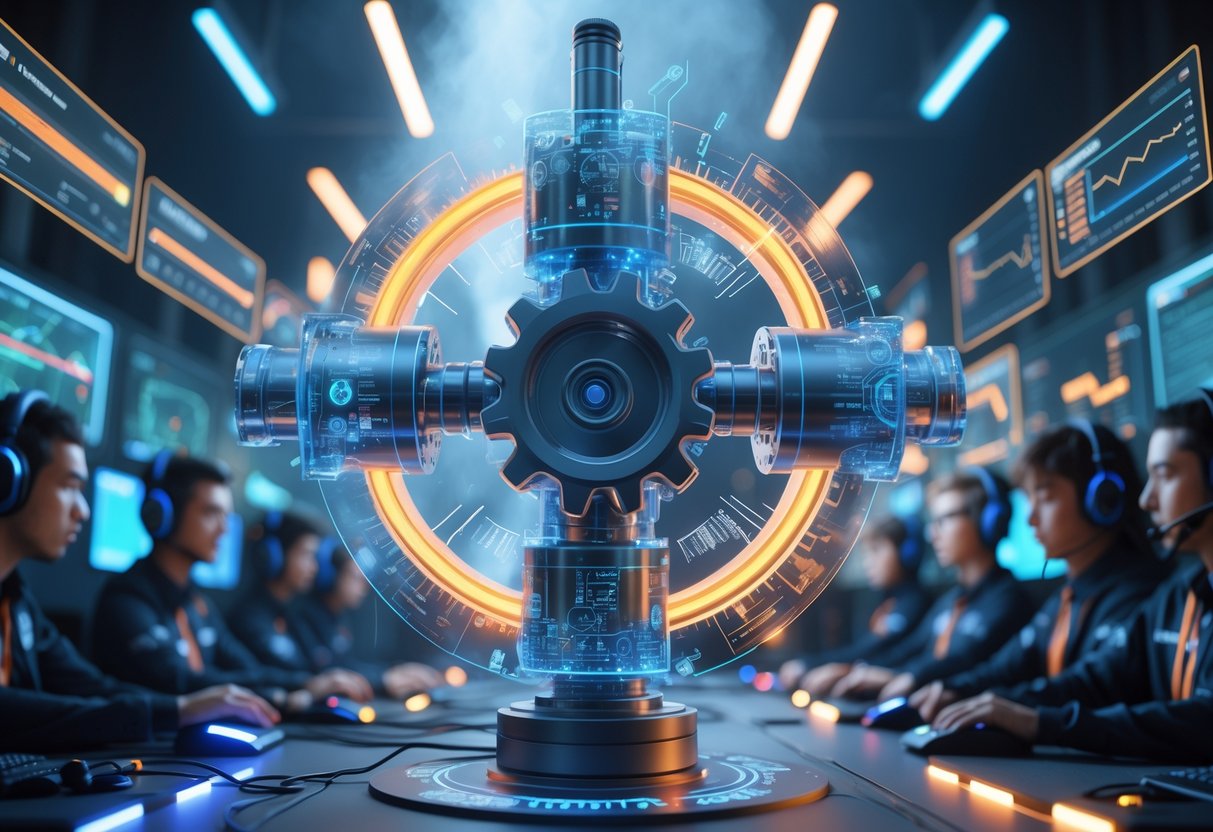
Deadlock faces some big hurdles if it wants to become a top esport, from balancing heroes to going up against established games like Overwatch 2. On the flip side, these challenges give Valve chances to innovate and grab a piece of the competitive scene.
Maintaining Fairness and Balance
Balance issues can ruin a competitive game fast. Valve keeps pushing updates to tackle this.
They switched from four lanes to three in February 2025, which totally changed how teams play around objectives and fights. Early access lets them experiment with major changes.
Current balance challenges include:
-
Heroes like Abrams and Bebop sometimes feel overpowered
-
Some heroes struggle to stay useful in competitive play
-
Meta shifts can favor certain playstyles too much
Regular patches keep things fresh but also make the meta unstable. Pro players need consistency to build strategies and master the game.
The move from big experimental changes to more careful tweaks will decide Deadlock’s competitive future. Games that get balance right deliver exciting matches where skill actually matters.
Handling Competition from Other Titles
Deadlock jumps into a market packed with strong games. Overwatch 2 already owns a lot of the hero shooter space.
The game’s hybrid style stands out, blending MOBA and shooter mechanics. This mix draws players from different competitive backgrounds. Some former Overwatch 2 pros have already started playing Deadlock tournaments.
Key competitive advantages:
-
Strategic depth that rewards team play
-
New mechanics that feel different from other games
-
Valve’s esports track record
Marvel Rivals and other new games are also on the way. Deadlock doesn’t have much time to establish itself before more competition arrives.
Community tournaments like Deadlock Fight Night show there’s real grassroots interest. These events give top players a place to shine and prove the game’s esports potential, even with a smaller player base.
Future Roadmap and Anticipated Updates
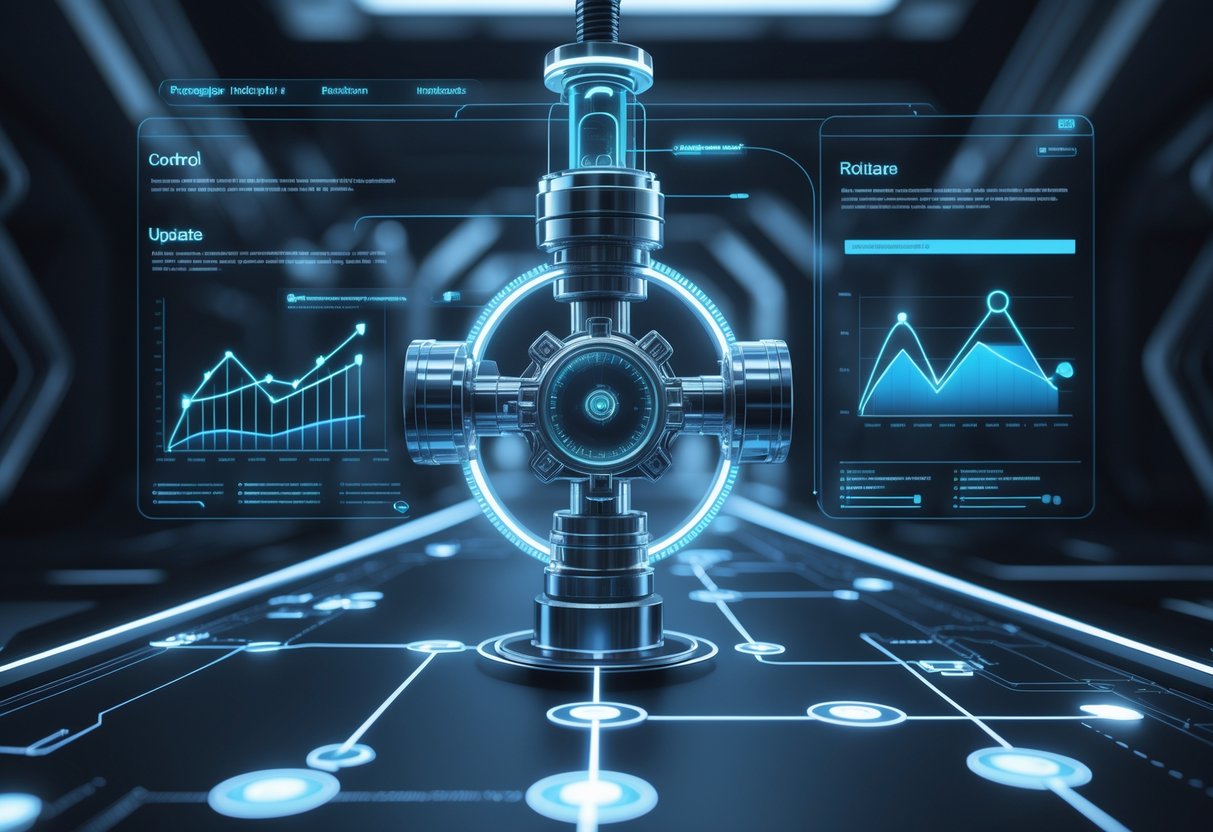
Valve has moved away from its two-week update cycle and now focuses on bigger, more polished updates that could shape Deadlock’s competitive future. The team is putting quality first and building systems to support organised esports.
Upcoming Features and Improvements
Valve just announced six new heroes for Deadlock, starting with Mina the vampire. The community gets to vote on which ones come next, so players have a real say in game development.
They switched from frequent two-week patches to fewer, larger updates. The idea is to make the game more stable and deliver meaningful improvements, not just constant little tweaks.
Recent big updates show Valve’s commitment to core systems:
-
January 2025: Four new heroes joined the roster (Calico, Holliday, Sinclair, and Vyper)
-
February 2025: Map redesign cut lanes from four to three
-
Ongoing balancing: Regular hero tweaks to keep things fair
These changes have shaken up gameplay by focusing objectives and improving team fights. The three-lane setup brings more action and is easier to follow for viewers.
Warning: Full release probably won’t happen until Q4 2025 at the earliest—some say it could slip into 2026.
Potential for Esports Integration
Deadlock actually keeps a pretty active grassroots competitive scene alive, even though the player base isn’t huge these days. Community tournaments—like Deadlock Fight Night and some college competitions—really show off the game’s esports potential.
High-level players from games like Overwatch 2 have started joining in. This kind of talent migration brings in a lot of competitive know-how and helps build a skilled player pool.
But the current esports infrastructure could use some work:
| Area | Current State | Needed Improvements |
|---|---|---|
| Observer tools | Basic functionality | Enhanced spectator features |
| Tournament support | Community-driven | Official Valve backing |
| Prize pools | Modest grassroots events | Structured competitive leagues |
Valve’s history with Counter-Strike 2 and Dota 2 really hints at strong potential for esports investment. Still, they need to communicate more clearly about their competitive support plans.
Deadlock’s got the strategic depth and mechanics that competitive players want. But honestly, it all comes down to whether Valve steps up and invests in solid esports infrastructure before the hype dies down.
Long-Term Success Factors

Deadlock’s future in the competitive world depends on keeping players interested with meaningful updates and strong tournament communities.
The game needs a stable player base and real grassroots support if it’s going to thrive.
Sustaining Player Interest
Right now, the player base is Deadlock’s biggest hurdle. The numbers have dropped from 170,000 in September 2024 to about 10,000 now.
Valve’s new update strategy for 2025 might help. Instead of tiny patches every two weeks, we’ll get bigger updates less frequently. That gives developers a chance to make deeper changes that actually improve the game.
Key factors for keeping players engaged:
- Balanced hero roster – No single hero should dominate every match
- Fresh content – New heroes like Calico, Holliday, Sinclair, and Vyper keep things fresh
- Stable gameplay – Valve isn’t afraid to make big changes, like moving from four lanes to three
The map redesign in February 2025 changed how teams fight and work together. These kinds of updates show Valve cares about making the game better, not just patching bugs.
Players want to see the game improve without wild, game-breaking changes every patch. Updates should add some excitement but keep the core experience intact.
Supporting Competitive Communities
Community involvement really drives Deadlock’s esports scene. Grassroots tournaments like Deadlock Fight Night keep competitive play alive, even with fewer players.
College competitions and community-run events give new talent a place to shine. Plenty of top players are switching from games like Overwatch 2 and bringing their own skills to Deadlock’s unique mix.
Essential support elements:
- Better observer tools for watching matches
- Structured leagues with regular seasons
- Prize pools that actually attract serious competitors
- Developer backing for big tournaments
Valve really needs to invest in proper esports infrastructure. The game’s got the depth for competitive play, but viewers need better ways to follow the action.
Consistent balancing lets competitive communities plan ahead. Teams can actually develop strategies if heroes don’t change every two weeks.
Tournament organisers want stability before they’ll invest in bigger events. They need to know Valve will support the game for the long haul.
Frequently Asked Questions

Players usually ask about things like player counts and matchmaking tweaks, while tournament organisers focus on anti-cheat measures and upcoming content.
What’s the current player count for Deadlock Valve competitions?
We don’t have exact competitive player numbers since Deadlock’s still in invite-only testing. The game runs on limited playtests, not open tournaments.
Most competitive activity happens in community-organised scrims and private matches. Some popular streamers and pro players from other games have gotten invites, which builds early interest.
Valve usually keeps player stats private during development. We’ll probably see official competitive numbers once the game launches publicly—maybe late 2025 or early 2026.
Can we anticipate any major updates to Deadlock Valve’s competitive gameplay?
Valve said they’re moving from bi-weekly updates to bigger, less frequent patches in 2025. These updates will focus on core competitive balance, not just small tweaks.
There’ll be longer gaps between changes, but the improvements should matter more. Hotfixes will still cover urgent issues.
We can expect hero balance tweaks, map changes, and competitive mode adjustments. Valve developer ‘Yoshi’ confirmed this new approach aims to create more meaningful competitive experiences.
How does Deadlock Fight Night influence the competitive scene of Deadlock Valve?
We haven’t found direct info about “Deadlock Fight Night” as an official format. Most organised play still happens through community tournaments and streamer events.
Early formats focus on 6v6 team matches that mix MOBA and hero shooter elements. Teams fight across multiple lanes and manage shooter mechanics at the same time.
Community tournaments help shape the competitive ruleset before official esports launches. These events test formats and spot balance issues.
Are there plans to introduce new maps or modes to spice up Deadlock Valve tournaments?
Valve is still working on the core map and game modes during testing. Right now, the focus is on perfecting the main competitive format, not just adding more stuff.
We’ll probably see map updates and maybe new modes as part of those bigger patches in 2025. Competitive integrity matters more than content quantity at this stage.
Tournament organisers use what’s available and provide feedback for future features. Community input keeps map balance in check.
How is the competitive matchmaking being improved for Deadlock Valve players?
Matchmaking improvements are ongoing during invite-only testing. Valve collects data on skill levels and queue times to refine the system.
The small player pool makes matchmaking tricky right now, but that should get better with public release. They’re focusing on rank accuracy and fair teams.
We’re expecting bigger matchmaking changes with the major 2025 patches. Valve’s experience with Counter-Strike and Dota 2 will definitely help shape these improvements.
What measures are being taken to ensure fair play and discourage cheating in Deadlock Valve contests?
Valve rolled out a pretty unusual anti-cheat system—they actually turn suspected cheaters into frogs right in the middle of matches. It’s a creative twist that calls out cheaters in front of everyone and still keeps the match fair.
They’re building on their VAC (Valve Anti-Cheat) tech but adding some game-specific tricks too. Sure, they still hand out traditional bans, but this new punishment adds a bit of flair.
Developers have really focused on keeping tournaments fair as they work on the game. I’d bet we’ll see even more anti-cheat tools show up before big competitive events kick off after launch.

